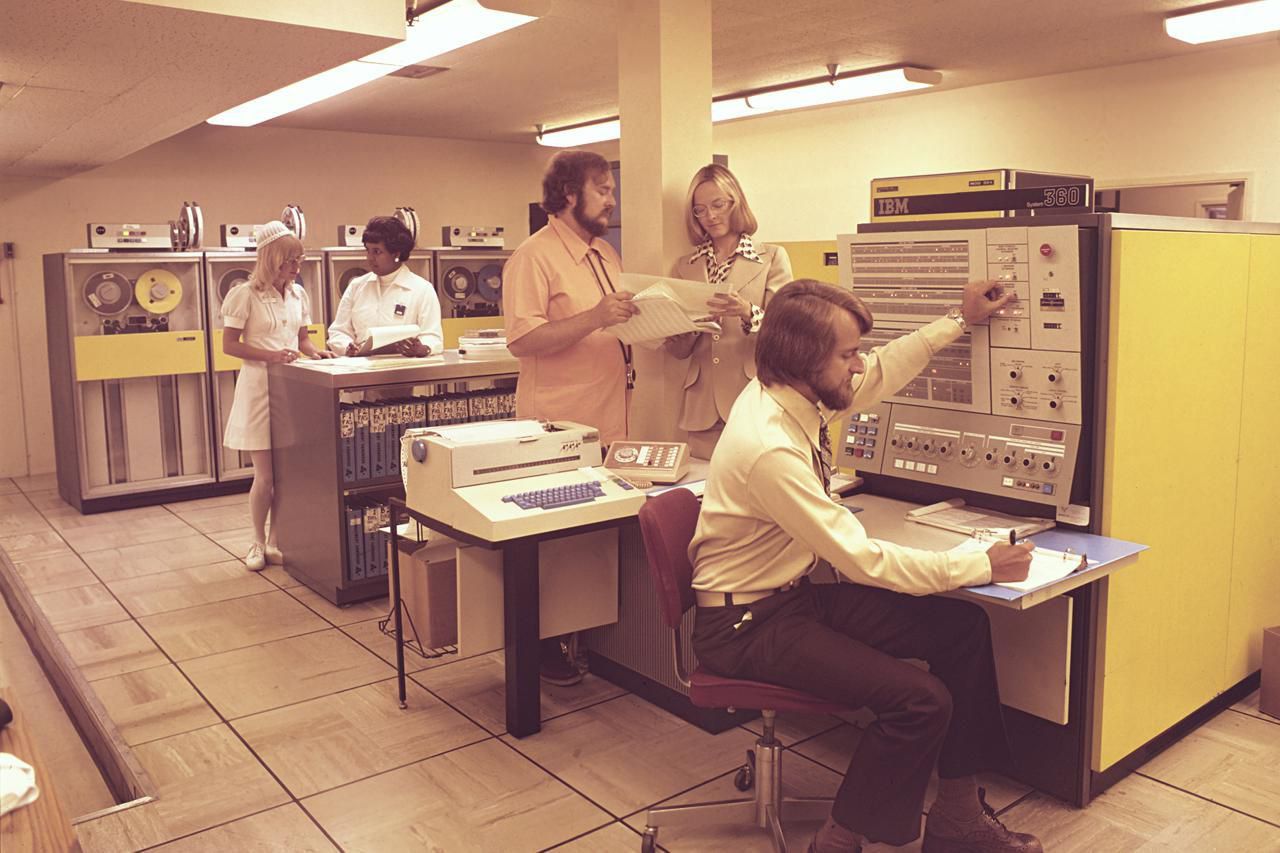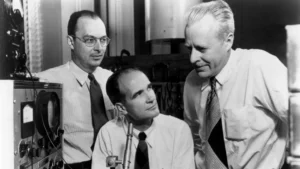Introduction:
Happy B’Day IBM, one hundred years ago, on a February day in 1924, a transformational event took place in the world of technology and business. The Computing-Tabulating-Recording Co. underwent a significant metamorphosis, emerging as the IB (International Business Machines Corp.)
Let’s delve into the fascinating evolution of IBM, tracing its humble beginnings to its ascent as an industry titan.
History
IBM, or International Business Machines Corporation, is a multinational technology company headquartered in Armonk, New York, United States. It is one of the world’s largest and most influential companies in the information technology and computer industry.
Here is a brief history of IBM:
- 1880s: The roots of IBM can be traced back to the 1880s, with the founding of four predecessor companies:
- The Tabulating Machine Company, founded by Herman Hollerith, developed punched card tabulating machines for the 1890 U.S. Census.
- The Bundy Manufacturing Company, makers of time clocks.
- The International Time Recording Company, another maker of time clocks and tabulating machines.
- The Computing Scale Company, which produced scales and other weighing machines.
- 1911: In 1911, these four companies were merged to form the Computing-Tabulating-Recording Company (CTR).
- 1924: In 1924, CTR was renamed “International Business Machines” (IBM).
- 1930s and 1940s: During the 1930s and 1940s, IBM expanded its business into new areas, such as electric typewriters, punched card accounting machines, and time equipment.
1950s and Ahead:
- 1950s: In the 1950s, IBM entered the computer industry with the introduction of the IBM 650, its first mass-produced computer.
- 1960s: In the 1960s, IBM dominated the mainframe computer market with the introduction of the IBM System/360, a family of compatible computers that could be used for a wide range of applications.
- 1970s and 1980s: In the 1970s and 1980s, IBM continued to be a leader in the computer industry, developing personal computers, such as the IBM PC, and minicomputers.
- 1990s and 2000s: In the 1990s and 2000s, IBM faced increasing competition from other technology companies, such as Microsoft and Apple. IBM responded by focusing on business services, such as consulting and outsourcing.
- 2010s and present: In the 2010s and present, IBM has continued to evolve, moving into areas such as artificial intelligence, cloud computing, and blockchain.
Today, IBM is a global leader in technology and innovation, with a wide range of products and services that help businesses of all sizes solve their most complex challenges.
The Assembling of IBM’s Parts
IBM traces its roots to the late 19th century, amidst a burgeoning era of industrialization and technological advancement. However, as the U.S. economy saw the rise of large enterprises, efficient information management became paramount.

Companies like International Time Recording Co., Computing Scale Co., and Tabulating Machine Co. played pivotal roles in pioneering innovations such as time-recording devices, scales, and punch-card tabulators. In 1911, these entities converged to form C-T-R, laying the groundwork for what would later become IBM.
Read More: 5 FREE Courses on AI and ChatGPT to Take You From 0-100 – techovedas
Enter Thomas Watson Sr.: A Visionary Leader
In 1914, Thomas Watson Sr., a seasoned sales executive renowned for his acumen and leadership, assumed the helm of C-T-R. With a keen eye for market opportunities and a relentless drive for innovation, Watson embarked on a mission to transform C-T-R into a high-tech data-processing enterprise.

By integrating operations, identifying growth avenues, and fostering a culture of excellence, Watson propelled C-T-R into uncharted territory, positioning it as a formidable player in the burgeoning technology landscape.
Read More: IBM Breaks Record with 1121-Qubit Quantum Processor: Condor Takes Flight – techovedas
Birth of a Corporate Culture
Under Watson’s stewardship, C-T-R experienced exponential growth, both in revenue and workforce.
Despite challenges posed by World War I and economic recessions, the company continued to thrive. This is fueled by Watson’s unwavering commitment to customer-centricity and operational excellence.
By instilling a culture of ethics, innovation, and international expansion, Watson laid the foundation for C-T-R’s evolution into a global leader.
Read More: What are 4 Major Issues with EUV: IBM at IEDM 2023 – techovedas
IBM Gets Its Name: A Symbol of Transformation
In 1924, C-T-R underwent a monumental rebranding, emerging as the International Business Machines Corp. (IBM).
This name change symbolized more than just a corporate identity; it signaled a profound transformation underway within the company.
Watson envisioned IBM as a major player in the industry, poised for international prominence. With a renewed focus on brand image, product innovation, and market expansion, IBM embarked on a trajectory of unprecedented growth and success.
IBM’s major contributions span across various domains, influencing technology, society, and scientific advancements. Here are some key highlights:
Early Computing Innovations:
- Punched Card Technology: Hollerith’s punched card tabulating machines, later developed by IBM, laid the foundation for data processing and analysis, impacting business and government operations.
- Fortran Programming Language: Developed by IBM, Fortran became a cornerstone for scientific computing and influenced generations of programming languages.
- Mainframe Computers: IBM’s dominance in the mainframe market brought computing power to large organizations, enabling complex tasks in various industries.
Technological Milestones:
- Magnetic Hard Drive: IBM invented the hard drive, revolutionizing data storage and making computers more practical for personal use.
- ATM Machines: IBM developed the Automated Teller Machine (ATM), transforming banking accessibility and convenience.
- Barcodes: The Universal Product Code (UPC) barcode system, pioneered by IBM, streamlined product identification and inventory management.
- Supercomputers: IBM’s continuous development of powerful supercomputers has driven scientific research and engineering breakthroughs.
Societal Impact:
- Social Security Administration: IBM’s technology supported the early operations of the Social Security Administration, impacting financial security for millions.
- Apollo missions: IBM computers processed critical data during the Apollo missions, playing a crucial role in landing humans on the moon.
- IBM Research: Their research labs have made significant contributions in artificial intelligence, quantum computing, and other key areas, shaping the future of technology.
Additionally:
- Corporate Responsibility: IBM has been recognized for its commitment to environmental sustainability and corporate social responsibility initiatives.
- Open Source Development: IBM actively participates in open-source projects, fostering collaboration and innovation in the tech community.
These are just some examples, and IBM’s contributions continue to evolve with their ongoing developments in cloud computing, AI, and other emerging technologies.
Continued Innovation and Market Expansion
Throughout the decades following its rebranding, IBM continued to innovate and expand its presence in the global market.
IBM developed groundbreaking technologies like the IBM System/360 mainframe computer in the 1960s. In the 1980s, personal computers proliferated. IBM stayed at the forefront of technological advancement throughout.
Strategic acquisitions and partnerships strengthened IBM’s position. This enabled the company to offer a comprehensive suite of solutions to businesses worldwide.
Read More: India is Ready for semiconductor revolution: PM Modi – techovedas
Conclusion:
As we reflect on IBM’s remarkable journey over the past century, one thing becomes abundantly clear: IBM’s legacy arises from not just technological innovation but also from relentlessly pursuing excellence and steadfastly committing to customer satisfaction.



